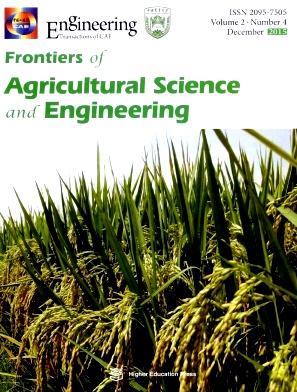INTEGRATED CROP-LIVESTOCK SYSTEMS: LESSONS FROM NEW YORK, BRITISH COLUMBIA, AND THE SOUTH-EASTERN UNITED STATES
IF 2.8
4区 农林科学
Q1 AGRONOMY
引用次数: 7
Abstract
Livestock production in the United States (US) and Canada is diverse, but shows a common trend in most livestock sectors toward fewer farms producing the majority of animal products despite a large number of farms still small in production scale. The migration to larger and more concentrated animal feeding operations in beef finishing and poultry, swine, and dairy production allows processors to streamline supplies to meet market demand for abundant, low-cost livestock products, whether that be for packaged meat, dairy products, or eggs. With concentration of livestock operations comes the challenge of managing manures. When sufficient land is available and nutrients are needed, livestock manure is an excellent nutrient source and land application is the preferred method of recycling this resource. However, when livestock production is constrained in a geographical area and animal densities are high, manure may become an environmental liability with potentially greater risk for runoff and leaching of nutrients, emission of odors, ammonia, and greenhouse gases, and release to the environment of pathogens and chemicals of emerging concern. Addressing these challenges now and into the future requires learning from mistakes and adopting successful approaches. We describe different levels of integration between livestock and crop producers in New York, British Columbia, and the south-eastern US as learning opportunities to improve economic and environmental sustainability. Examples show that effective solutions should recognize (1) manure has value and is not just a cost, (2) farmers, farm advisors, extension educators, nutrient management planners, crop advisors, nutritionists, state agency personnel, regulators, and university researchers need to be active participants in development of solutions, and (3) change to a sustainable future requires a combination of government regulation and outcome-based incentives.综合作物-牲畜系统:来自纽约、不列颠哥伦比亚省和美国东南部的经验
美国和加拿大的畜牧生产是多种多样的,但在大多数畜牧部门显示出一个共同的趋势,即生产大多数动物产品的农场较少,尽管大量农场的生产规模仍然很小。在牛肉精育、家禽、猪和乳制品生产中,向规模更大、更集中的动物饲养操作的迁移,使加工商能够简化供应,以满足市场对大量低成本畜产品的需求,无论是包装肉类、乳制品还是蛋类。随着畜牧业的集中,粪便管理也面临挑战。当有足够的土地可用和养分需要时,牲畜粪便是一种极好的养分来源,土地施用是回收这种资源的首选方法。然而,当牲畜生产在地理区域受到限制且动物密度较高时,粪便可能成为一种环境负担,具有潜在的更大风险,包括径流和养分淋失、气味、氨和温室气体的排放,以及向环境释放病原体和新出现的关注化学品。应对现在和未来的这些挑战需要从错误中吸取教训并采用成功的方法。我们将纽约、不列颠哥伦比亚省和美国东南部的牲畜和作物生产者之间不同程度的整合描述为提高经济和环境可持续性的学习机会。实例表明,有效的解决方案应该认识到:(1)粪便具有价值,而不仅仅是一种成本;(2)农民、农场顾问、推广教育者、营养管理规划师、作物顾问、营养学家、国家机构人员、监管机构和大学研究人员需要积极参与解决方案的开发;(3)向可持续未来的转变需要政府监管和基于结果的激励相结合。
本文章由计算机程序翻译,如有差异,请以英文原文为准。
求助全文
约1分钟内获得全文
求助全文
来源期刊
CiteScore
5.10
自引率
2.70%
发文量
33
期刊介绍:
Frontiers of Agricultural Science and Engineering (FASE) is an international journal for research on agricultural science and engineering. The journal’s aim is to report advanced and innovative scientific proceedings in agricultural field including Crop Science, Agricultural Biotechnology, Horticulture, Plant Protection, Agricultural Engineering, Forestry Engineering, Agricultural Resources, Animal Husbandry and Veterinary Medicine, Applied Ecology, Forestry and Fisheries. FASE is committed to provide a high level scientific and professional forum for researchers worldwide to publish their original findings and to utilize these novel findings to benefit the society.

 求助内容:
求助内容: 应助结果提醒方式:
应助结果提醒方式:


